ISAR Imaging Analysis of Complex Aerial Targets Based on Deep Learning
Abstract
:1. Introduction
2. ISAR Model
2.1. Principles of Electromagnetic Analysis
2.2. ISAR Signal Model
3. CapsNet Assists ISAR Imaging
3.1. A Radar ISAR Imaging System Based on CapsNet
- AKconv
- b.
- GSconv
3.2. Training of the CapsNet
4. Analysis of Simulation Results and Experimental Results
4.1. Simulation Results
4.2. Measurement Results
5. Conclusions
Author Contributions
Funding
Institutional Review Board Statement
Informed Consent Statement
Data Availability Statement
Conflicts of Interest
References
- Zhang, H.H. Adaptive Neighborhood-Preserving Discriminant Projection Method for HRRP-Based Radar Target Recognition. IEEE Antennas Wirel. Propag. Lett. 2014, 1, 1–3. [Google Scholar] [CrossRef]
- Chou, H.T.; Chang, T. Indoor Experimental Setup for Radar Antenna Characterization by Placing a Reference Target at the Focus of Compact Range Reflector. IEEE Trans. Antennas Propag. 2023, 71, 7860–7869. [Google Scholar] [CrossRef]
- Kong, D.H.; Zhang, W.W. Intelligent Prediction for Scattering Properties Based on Multihead Attention and Target Inherent Feature Parameter. IEEE Trans. Antennas Propag. 2023, 71, 5504–5509. [Google Scholar] [CrossRef]
- Dural, G.; Moffatt, D.L. ISAR imaging to identify basic scattering mechanisms. IEEE Trans. Antennas Propag. 1994, 42, 99–110. [Google Scholar] [CrossRef]
- Zhang, S.X.; Li, S.Y. A Novel Azimuth Doppler Signal Reconstruction Approach for the GEO-LEO Bi-Static Multi-Channel HRWS SAR System. IEEE Access 2019, 7, 39539–39546. [Google Scholar] [CrossRef]
- Wang, R. Double-Channel Bistatic SAR System With Spaceborne Illuminator for 2-D and 3-D SAR Remote Sensing. IEEE Trans. Geosci. Remote Sens. 2013, 51, 4496–4507. [Google Scholar] [CrossRef]
- Given, J.A.; Schmidt, W.R. Generalized ISAR-part II: Interferometric techniques for three-dimensional location of scatterers. IEEE Trans. Image Process. 2005, 14, 1792–1797. [Google Scholar] [CrossRef] [PubMed]
- Zhang, S.; Liu, Y. Fast Sparse Aperture ISAR Autofocusing and Imaging via ADMM Based Sparse Bayesian Learning. IEEE Trans. Image Process. 2020, 29, 3213–3226. [Google Scholar] [CrossRef] [PubMed]
- Liu, X.X. Parallel Moment Method Analysis of Electro-large Complex target scattering Problem. Autom. Technol. Appl. 2021, 40, 69–73. [Google Scholar]
- Feng, T.T. Research on Electromagnetic Scattering and ISAR Imaging of Target and Sea Surface with Broken Waves Based on SBR-FSM Hybrid Method. Ph.D. Thesis, Xian University of Electronic Science and Technology, Xi’an, China, 2022. [Google Scholar]
- Gao, H.T.; Ke, H.Y. Application of Component decomposition Method/High frequency hybrid Method in near field prediction of complex target scattering. J. Microw. 2001, 1, 54–59. [Google Scholar]
- Gao, J.B. Enhanced radar imagingusing a complex-valued convolutional neural network. IEEE Geosci. Remote Sens. Lett. 2019, 16, 35–39. [Google Scholar] [CrossRef]
- Mason, E. Deep learning for radar. Prc. IEEE Radar Conf. (RadarConf) 2017, 1, 1703–1708. [Google Scholar]
- Huang, S.; Qian, J. ISAR maneuveringtarget imaging based on convolutional neural network. Prc. IEEE Int. Geosci. Remote Sens. Symp. (IGARSS) 2019, 1, 2551–2554. [Google Scholar]
- Sun, Z.Z. Research on Theory and Method of Target Scattering Feature Extraction Based on Two-Dimensional Image of Radar Target in Optical Region. Ph.D. Thesis, PLA National University of Defense Technology, Changsha, China, 2001. [Google Scholar]
- Xiang, C.; Lu, Z.; Zou, W. MS-CapsNet: A Novel Multi-Scale Capsule Network. IEEE Signal Process. Lett. 2018, 3, 1–6. [Google Scholar] [CrossRef]
- Hao, C. Emotion Recognition from Multiband EEG Signals Using CapsNet. Sensors 2019, 19, 2212. [Google Scholar] [CrossRef]
- Tang, N. Research on ISAR image Feature Extraction and Recognition Technology of Aerial Target. Ph.D. Thesis, National University of Defense Technology, Changsha, China, 2012. [Google Scholar]
- Zikidis, K.C. Early Warning Against Stealth Aircraft, Missiles and Unmanned Aerial Vehicles. Ph.D. Thesis, National University of Defense Technology, Changsha, China, 2018. [Google Scholar]
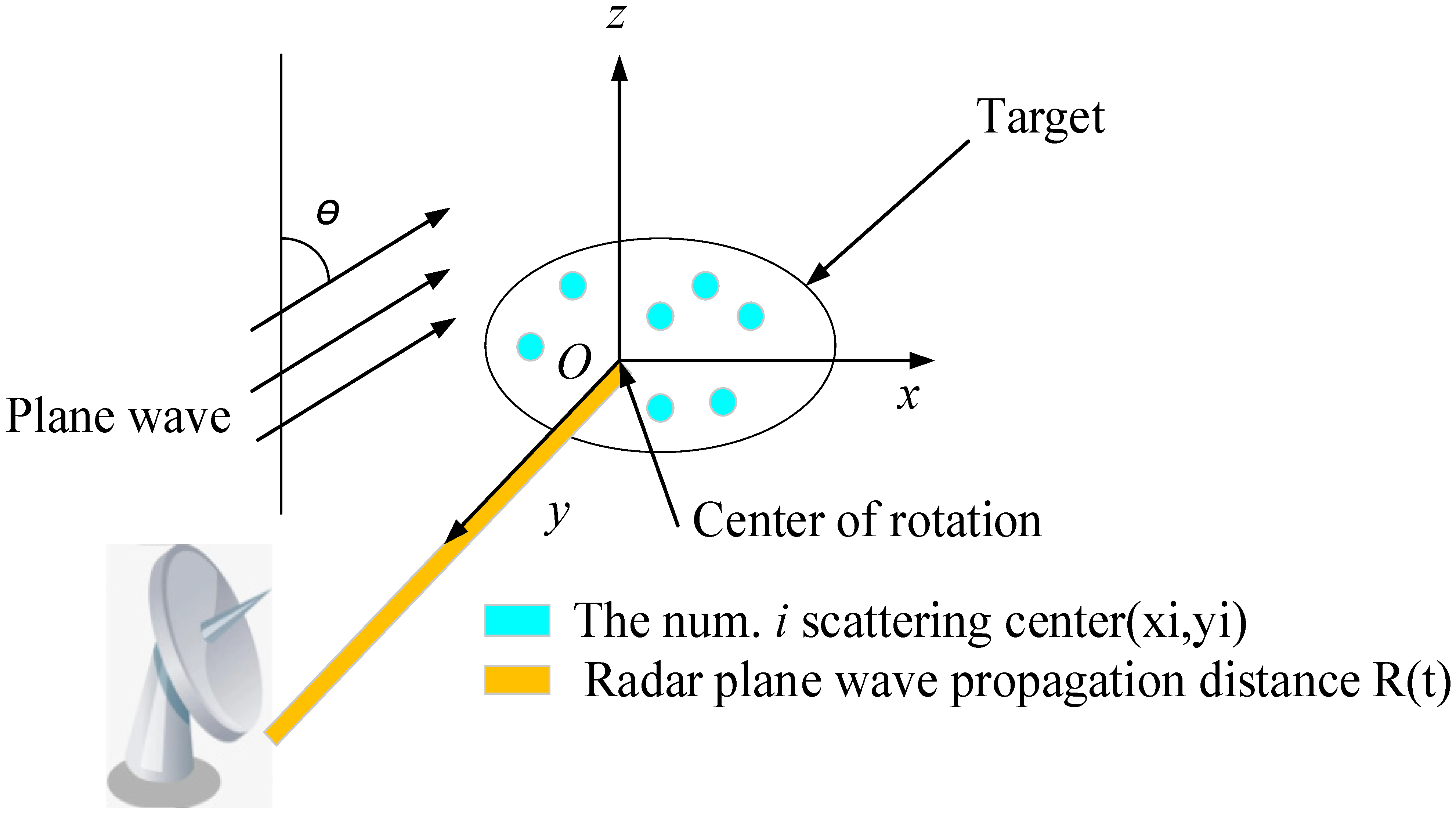


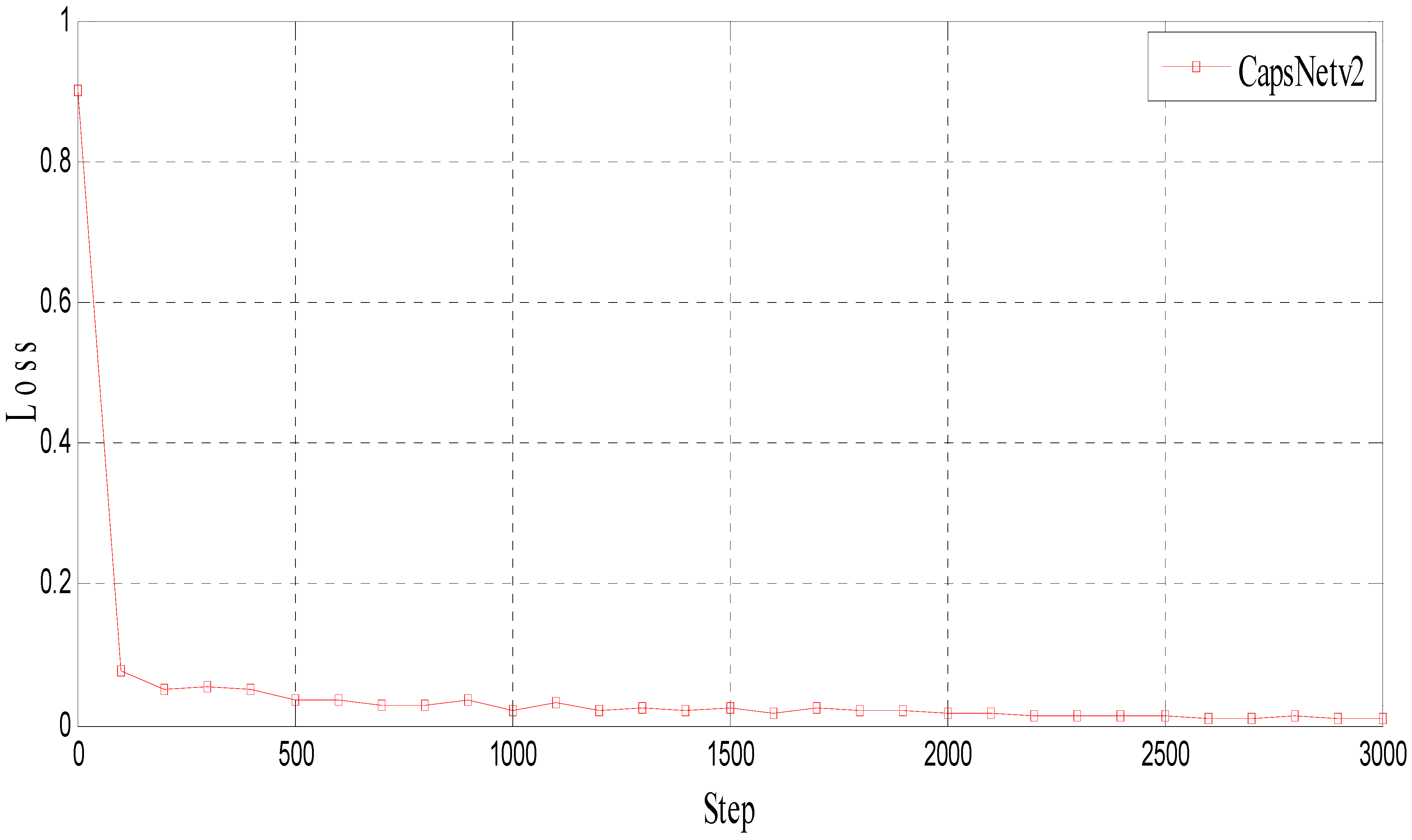
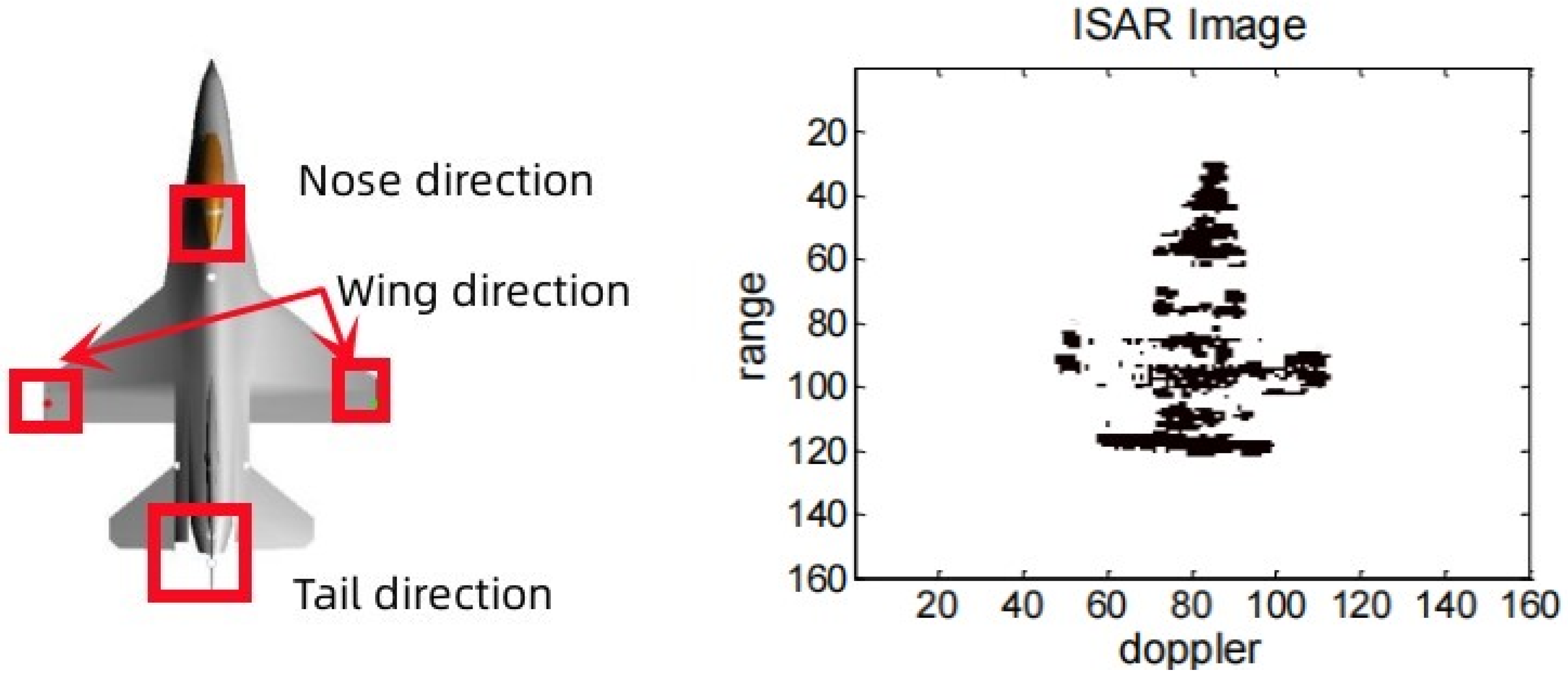


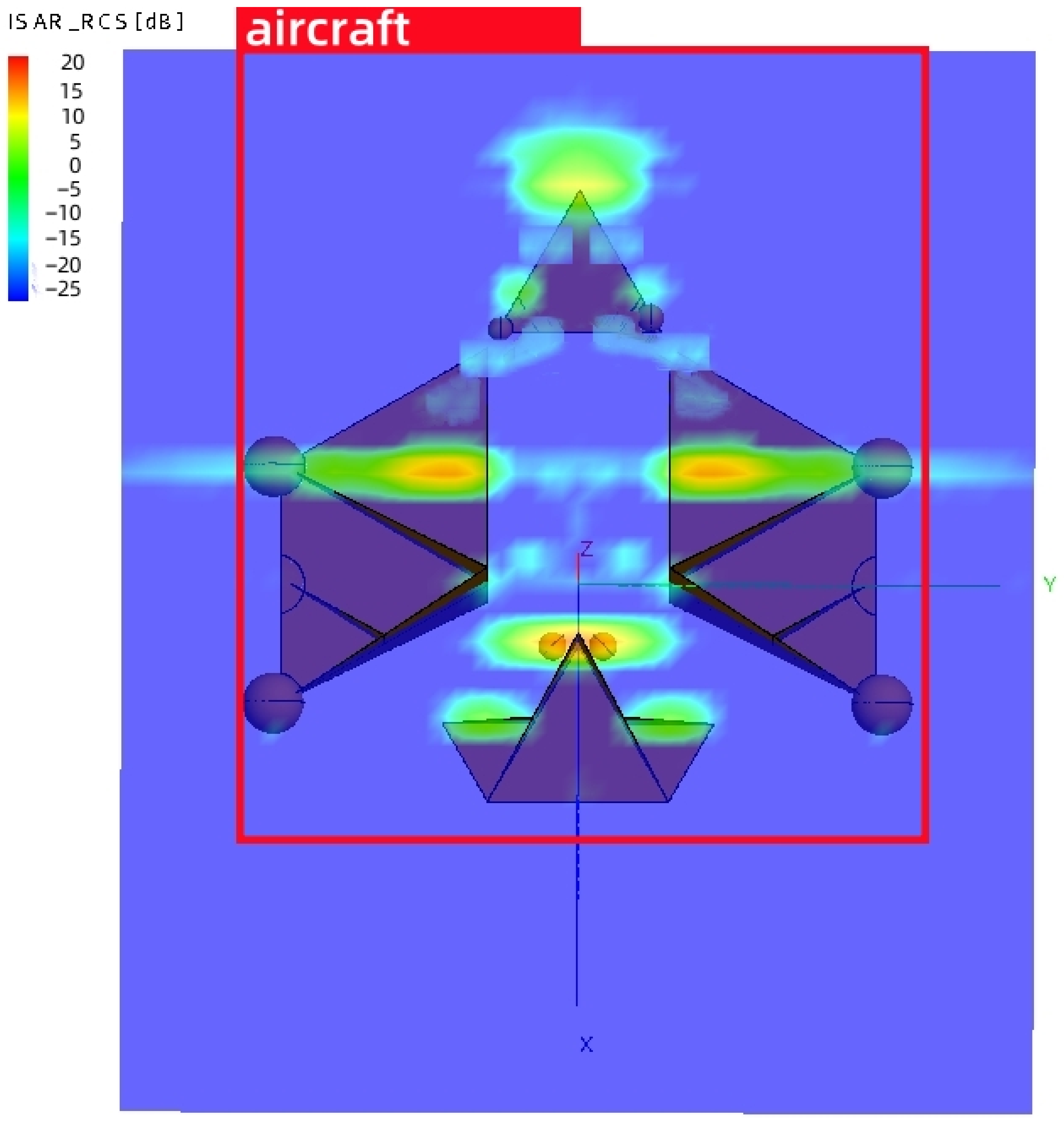
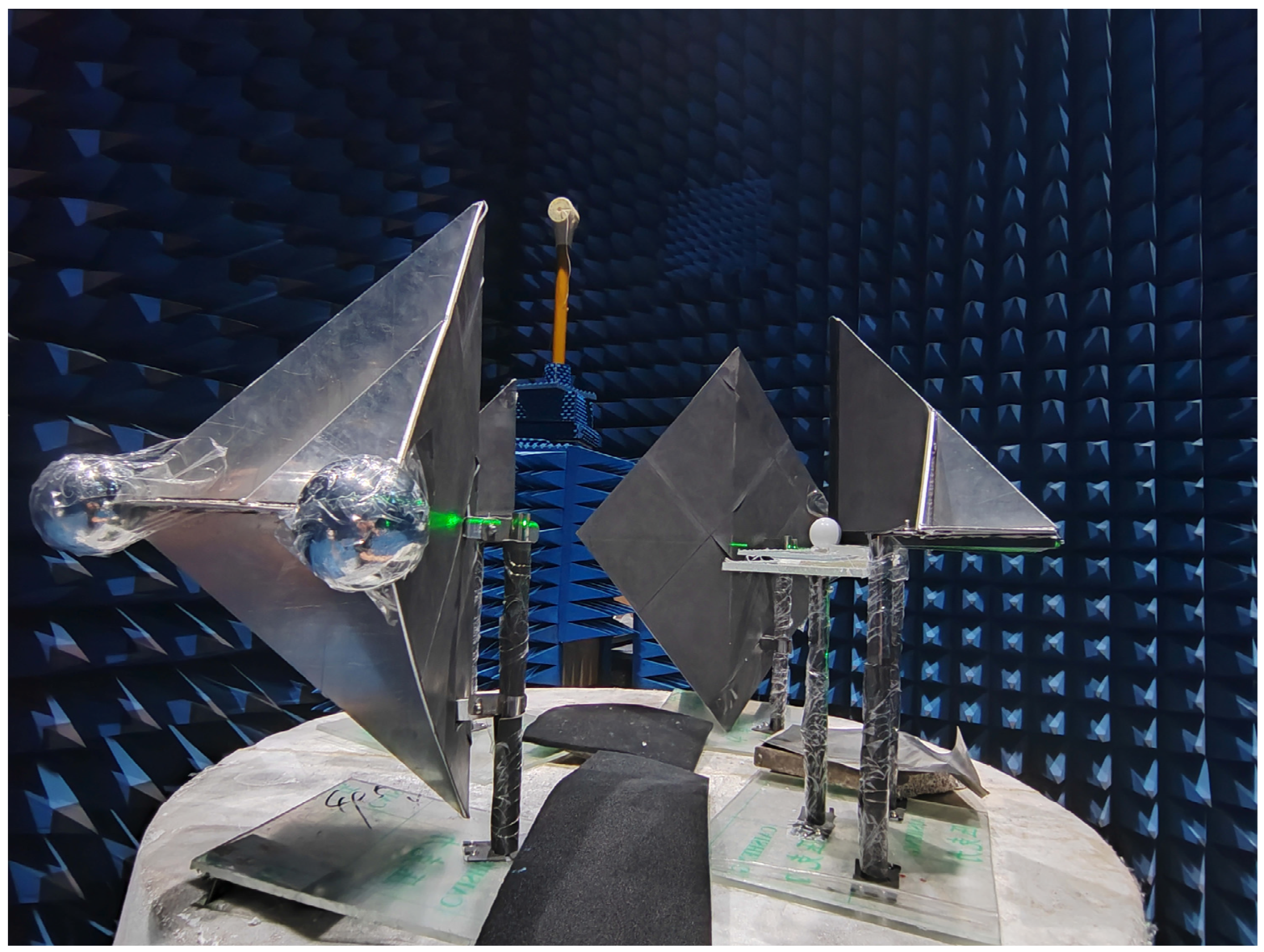
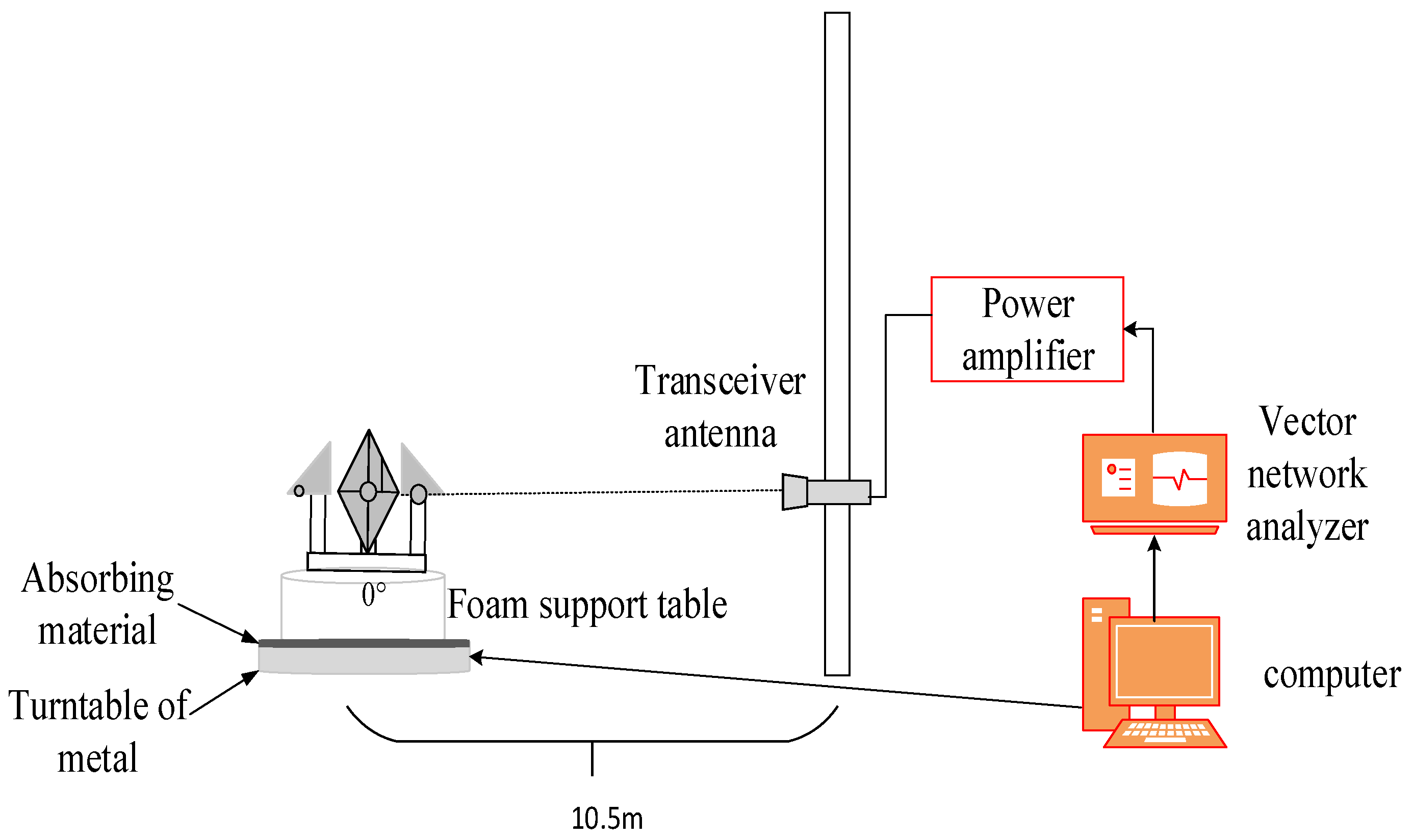

| Number of Training data | 1000 |
| Loss function | Smooth |
| Gradient optimization | Adam |
| Learning rate | 0.002 |
| Batch_size | 1 |
| Epoch | 1 |
| Azimuth Angle | Typical Characteristics | First Peak Point (dBsm) | Contribution Position | Sub-Peak Point (dBsm) | Contribution Position |
|---|---|---|---|---|---|
| 0° | Nose direction | 26.88 | Inlet, cockpit | 10.52, 6.85 | Inlet lip, etc. |
| 90° | Wing direction | 39.32 | Fuselage, vertical tail | 13.96 | engine |
| Item | Parameter |
|---|---|
| Incident wave frequency | 8~12 GHz |
| Step frequency length | 0.01 GHz |
| angular range | −180~180° |
| Sweep interval | 0.5° |
| Polarization mode | HH |
| Working mode | Far field |
| Grid splitting method | triangle |
| Solution method | RL-GO |
| Item | Parameter |
|---|---|
| Test frequency | 8~12 GHz |
| Step frequency length | 0.01 GHz |
| angular range | −180~180° |
| Sweep interval | 0.5° |
| Polarization mode | HH |
| Transmit–receive antenna spacing | 20 mm |
| Target distance | 9 m |
| Maximum power | 20 dBm |
Disclaimer/Publisher’s Note: The statements, opinions and data contained in all publications are solely those of the individual author(s) and contributor(s) and not of MDPI and/or the editor(s). MDPI and/or the editor(s) disclaim responsibility for any injury to people or property resulting from any ideas, methods, instructions or products referred to in the content. |
© 2024 by the authors. Licensee MDPI, Basel, Switzerland. This article is an open access article distributed under the terms and conditions of the Creative Commons Attribution (CC BY) license (https://creativecommons.org/licenses/by/4.0/).
Share and Cite
Wang, Y.; Hao, J.; Yang, S.; Gao, H. ISAR Imaging Analysis of Complex Aerial Targets Based on Deep Learning. Appl. Sci. 2024, 14, 7708. https://doi.org/10.3390/app14177708
Wang Y, Hao J, Yang S, Gao H. ISAR Imaging Analysis of Complex Aerial Targets Based on Deep Learning. Applied Sciences. 2024; 14(17):7708. https://doi.org/10.3390/app14177708
Chicago/Turabian StyleWang, Yifeng, Jiaxing Hao, Sen Yang, and Hongmin Gao. 2024. "ISAR Imaging Analysis of Complex Aerial Targets Based on Deep Learning" Applied Sciences 14, no. 17: 7708. https://doi.org/10.3390/app14177708
APA StyleWang, Y., Hao, J., Yang, S., & Gao, H. (2024). ISAR Imaging Analysis of Complex Aerial Targets Based on Deep Learning. Applied Sciences, 14(17), 7708. https://doi.org/10.3390/app14177708





